Three established designers look back at their personal challenges in the pandemic and envision a tomorrow filled with hope, perspective, and style.
As with the rest of the world, the Philippine fashion industry came to a standstill when lockdowns were enforced early last year. Runways became empty, showrooms fell silent, production lines halted, and street fashion became almost nonexistent. With nowhere to go and no reason to dress up, everyone stayed at home in their comfiest house clothes.
Our local designers’ creative impulses could not be contained, however. To counter challenges like unsold inventory, unused materials, and dismal sales, many brands pivoted online.
They started making their own custom face masks and personal protective equipment (PPE). Others took on the challenge of working with readily available materials to create capsule collections.
Designers rallied together online to help each other out, whether through exchanging ideas, collaborating for new designs, raising funds for relief operations, or brainstorming the future of Philippine fashion.
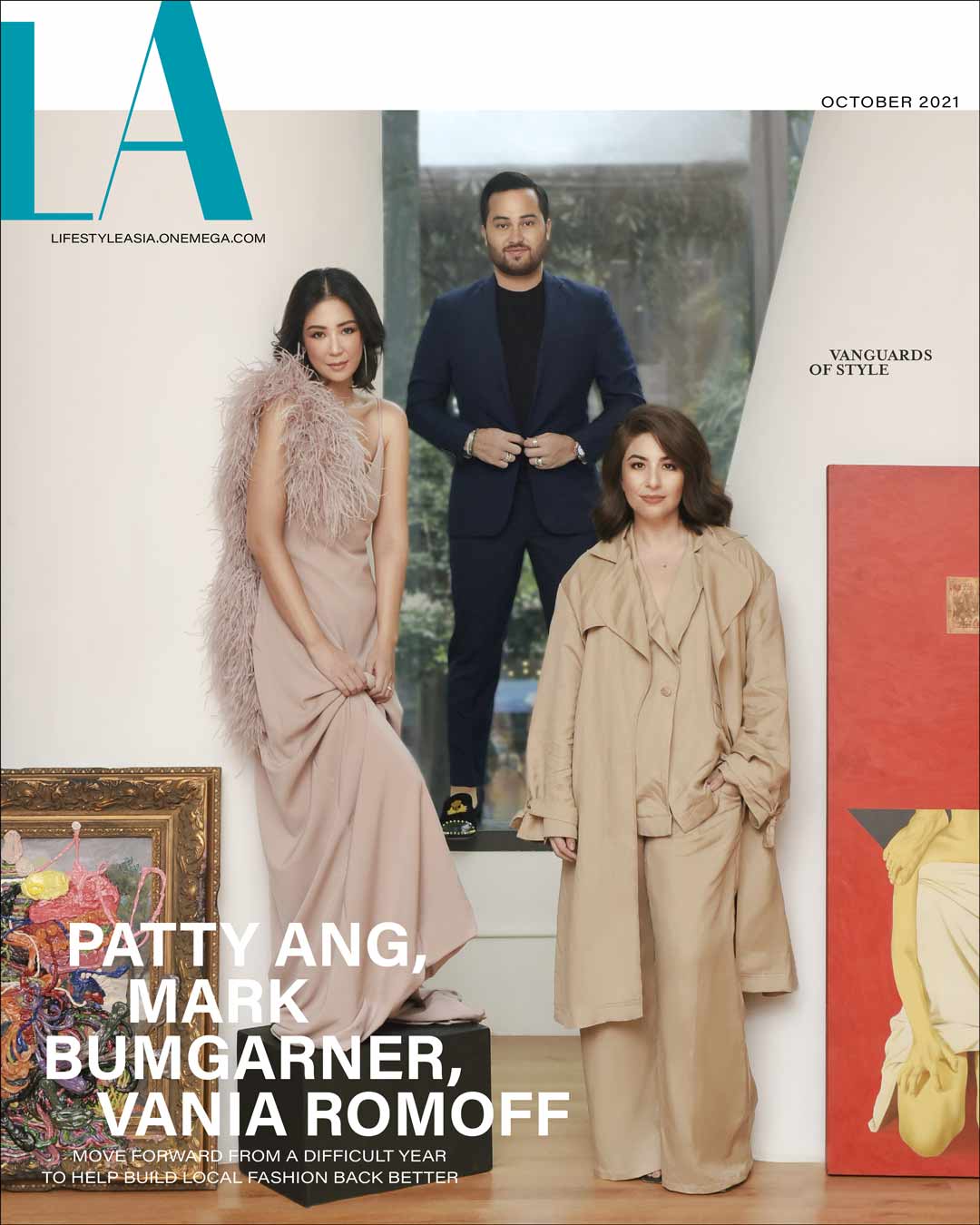
For Vania Romoff, Mark Bumgarner, and Patty Ang—established names in Philippine fashion today—these challenges and endeavors hit close to home.
Using limitations as opportunities to exercise their creativity, these designers have not only kept their brands alive, but they have also developed newfound grit, creative solutions, and an optimistic vision for Philippine fashion, one that today’s aspiring designers ought to know to thrive in the future.
No one left behind
When the lockdown began, all that Romoff could think of was how she could keep her company afloat.
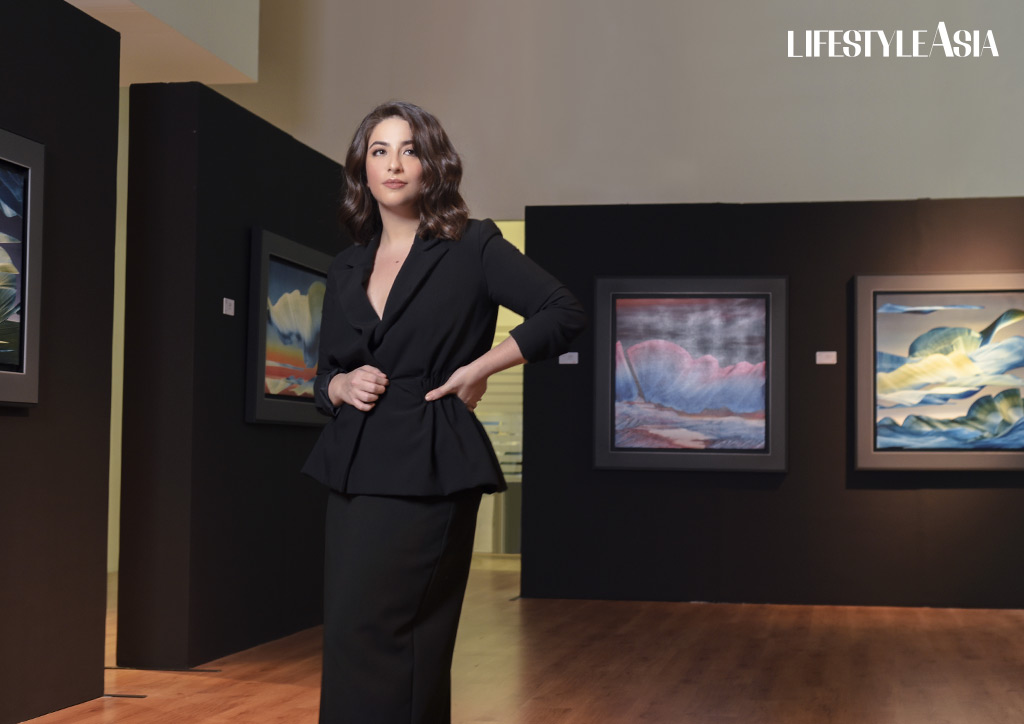
“I own an independent company, and while it is small, it is responsible for the livelihood of all our employees. Closing down was never an option for us,” she notes. “We did what we could to manage the finances ourselves, whether it was through selling protective outerwear and masks, or holding inventory sales. It was all about survival.”
While their PPEs did well and were able to provide work for Romoff’s staff at the onset, the designer knew that she had to go back soon to her roots: creating thoughtfully designed feminine pieces for today’s woman.
“Almost two years forward though, the concept of surviving wears you down. You realize that you need to push forward and adapt to the current situation. So you try to be as positive as you can—in my case, that means creating beautiful clothes again. We decided to continue creating pieces that celebrate life.”
With restrictions in place, Romoff and her team got creative, holding out on long-term plans and instead crafting capsule collections using existing inventory materials.
All efforts also got pushed online, allowing more people to see classic and new Vania Romoff designs. Currently, her Rockwell studio accommodates clients at limited capacity.
Less is more
Similarly, the lockdown pushed Bumgarner and his team to rethink how they can utilize their inventory better.

“At the height of the lockdown, fabrics and other raw materials were difficult to source. At the same time, we were able to reevaluate how our studio consumed materials and generated waste,” he shares. “We had to create new rules for purchasing items so that we could avoid too much inventory.”
Anything in excess wouldn’t have helped Bumgarner, especially since his clients were requesting more minimalist dresses fit for current circumstances.
“A lot of events got cancelled or reduced to a much smaller scale. This resulted in our clients looking for something more appropriate for the times. As a designer, I had to look at it as an opportunity to explore, experiment, and discover new ways of looking at design while serving the needs of the market.”
As someone who loves the romantic feminine and classic aesthetic, Bumgarner is not a stranger to addressing a more subdued design sensibility.
“I explored this newfound demand in a way that I was still able to keep my brand identity, but now with a new sensitivity toward the current state of fashion.”
On top of new designs, Bumgarner was also able to release his own line of PPEs and face masks called The Armor Project.
The two collections under the line feature an assortment of protective bomber jackets, joggers, dresses, and jumpsuits. “The Armor Project was well-received, and it’s still available for order up to now,” Bumgarner adds.
Creative ways to help
Known for her clean and classic aesthetic, Ang currently manages two brands under her company: her namesake atelier and Patton, a collection of everyday comfortable basics.
Admitting that she isn’t techie, the designer found it challenging to work from home at the beginning. “The lockdown was quite hard not only for me, but for the whole team as well. Being on-the-go everyday was what kept us driven and energized, both business and creativity-wise,” she shares.
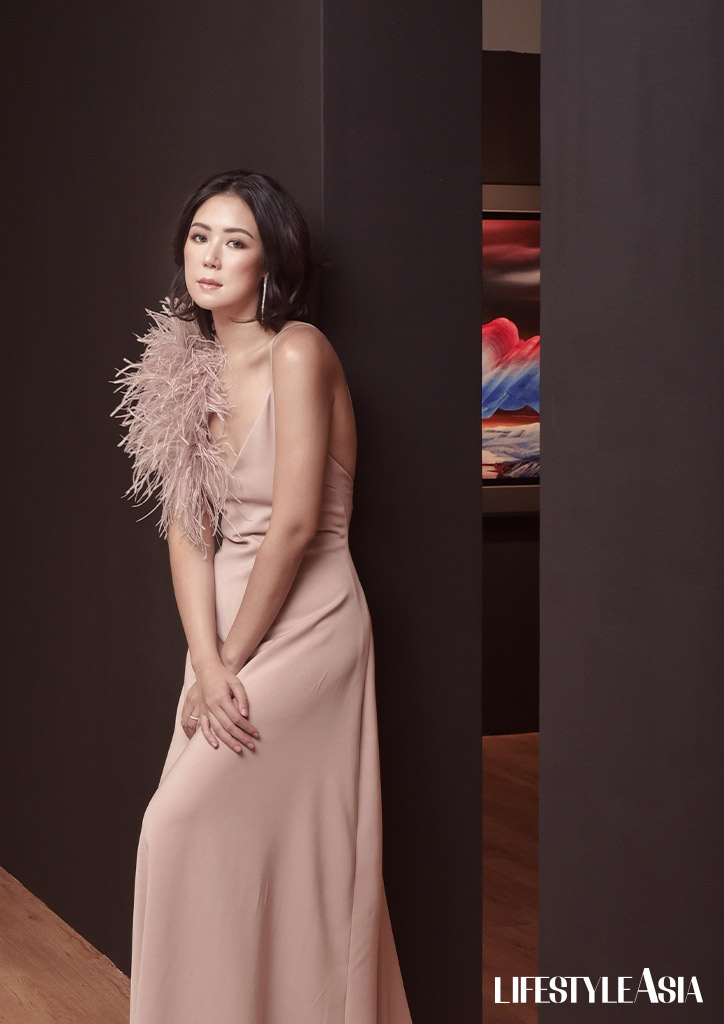
Constant communication and pivoting helped their business most, Ang notes.
“It was important for us to constantly listen to our clients and promptly identify what they needed,” she explains. “Since we can’t do fittings or allow our customers to feel the materials, for instance, we had to make sure that our communication lines were always clear and open. Thankfully, our team was able to adapt and create many creative solutions for this.”
Even with these challenges, Ang still made it a point to prioritize making PPEs for those who needed it the most.
“PPEs weren’t exactly something that brought out my creativity, but we wanted to make them anyway because helping others became our top priority. We weren’t even thinking about how PPEs could make our business grow. After years of support from others, I felt that it was a time to give back in any way we can,” she notes.
Ang’s generosity didn’t stop there—just a few months ago, Patton also released “Resilience,” a capsule collection featuring oversized hoodies and sweaters with the collection’s name knitted on the pieces. Aside from its hopeful messaging, the clothes were also made for a cause: a portion of the sales of the pieces went to the MovEd Foundation, an organization that provides early childhood education for children in indigent communities.
Sustainability as the Norm
Across the global fashion industry, “sustainability” became one of the loudest buzzwords amid the pandemic.
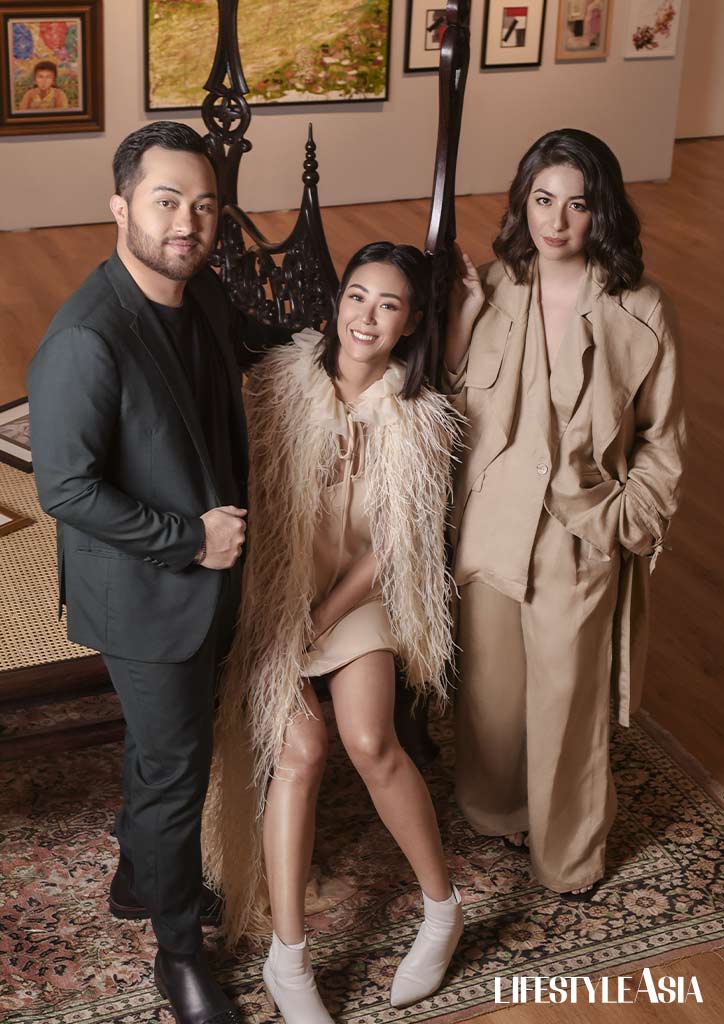
More attention has been given toward how our clothes are made, who creates our garments, what our outfits are made of, and if we do need as many items of clothing as we currently have and desire, among other concerns.
While Ang admits that it is challenging to become a 100 percent sustainable brand, what’s important for her is that she is constantly taking small steps toward more environment-friendly processes. Tackling sustainability from the production side, Ang shares that Patton has been making strides in this area.
“Our athleisure line uses REPREVE, which is fiber made from recycled materials. For instance, the plastic bottles that end up in landfills or pollute our oceans get made into this durable material. We also make sure that our bodysuits are primarily made of organic materials,” the designer explains.

For Bumgarner, he hopes that good sustainable design becomes the norm for Philippine fashion—and the global industry—rather than a passing trend. “If there’s anything that the pandemic taught us, it’s that we should reduce overconsumption—not just in fashion, but in other aspects of our life as well,” he says.
He also thinks that classic design, which he always incorporates in his collections, is inherently sustainable. “For me, a good design is a classic design—something that can still be worn in style after five or ten years. My clients always ask for pieces like these. They want to have clothes that they can wear several times and can be paired with their existing garments.”
Romoff concurs with this idea. “While there is a surplus of designers and brands these days, good design will always be good design, and that should set you apart. This, along with sustainability and the slow fashion movement, has become an essential part of today’s fashion landscape,” she adds.
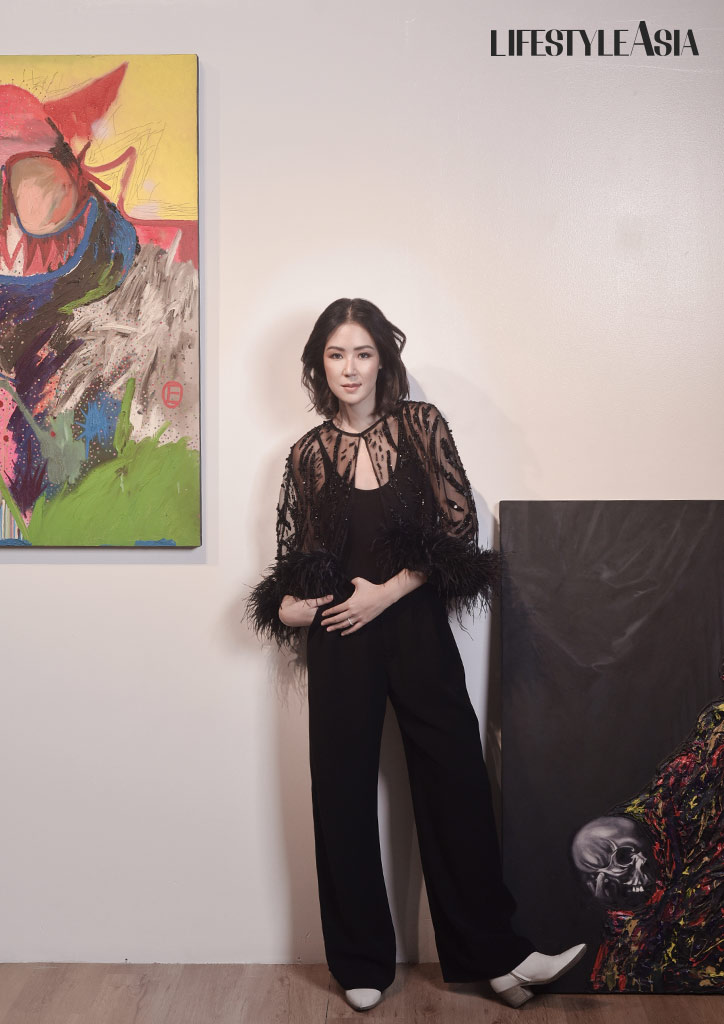
She also provides another perspective on sustainability. “To me, it also equates to this: designed and made in the Philippines. It means that we are sustaining our local livelihood, and that we are investing in the survival of our industry.”
The next normal
Drawing from their years of experience in the industry, and throughout the challenges that they’ve surpassed during the pandemic, what words of wisdom do Ang, Bumgarner, and Romoff have to offer for the country’s next generation of designers—creatives who face the unique challenge of starting their careers amid precarious times?
“Young designers should take advantage of this time to process and think about not only their brand, designs, and aesthetic, but also their business structure and plan. They have to remember that it’s not always just about creativity, the glitz, and the glam; designers are also entrepreneurs. I think this is the perfect time to reflect on these things, so that when we all get back to normal soon, designers are more than ready,” Ang says.
Bumgarner echoes these sentiments: “Our young designers are creative and in step with global fashion, thanks to social media. They’re the bright future of our industry. However, tackling business and industry concerns will still be part of their growth as entrepreneurs. No one will be able to tell them what to do—they’ll have to experience these firsthand.”

“If you’re a starting designer, keep your team small, and be prepared to scale up when the markets open after the pandemic. Be quick in adapting to the evolving needs of the market. Also consider developing an aesthetic that’s sustainable not only in design, but in its material choices and mode of production,” he adds.
While she is uncertain about the direction of Philippine fashion, Romoff hopes that the current openness in the industry can help the next crop of talents thrive in the future.
“We have so many creatives who do so much with limited resources. What I noticed in the past year is that people in the local fashion industry are willing to help each other out. I’ve had long conversations with friends in the business about how we can all move forward and survive. This brings me so much hope,” she says.
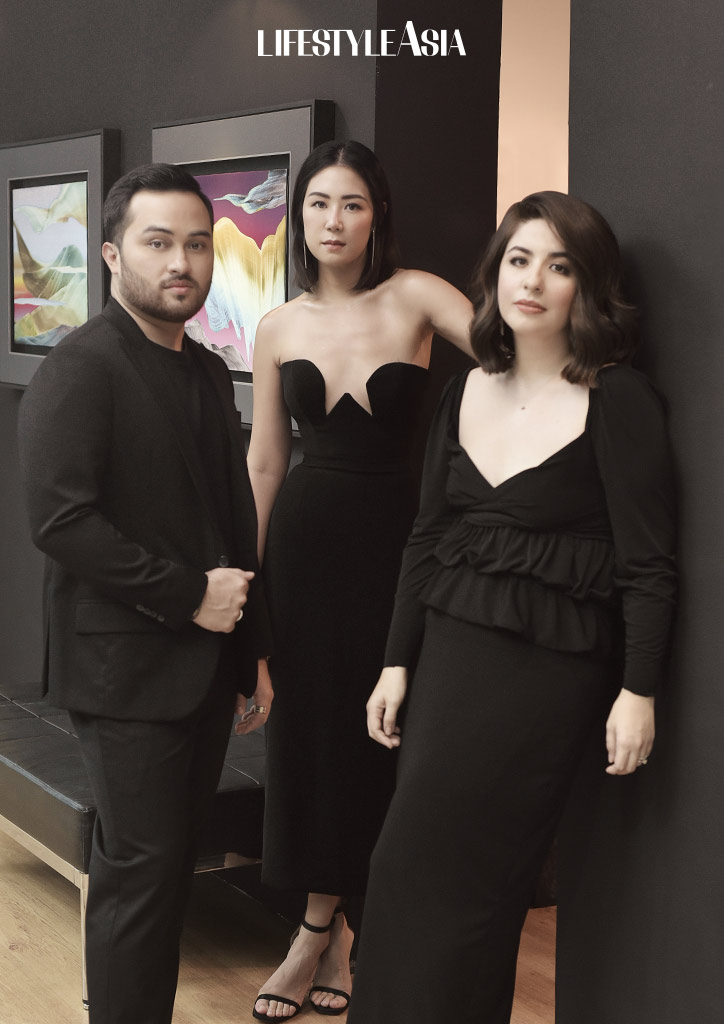
Romoff also hopes that young designers can wisely use the avenues that social media has opened for their growth.
“I have been in the industry for more than a decade, and the landscape has changed so much since then,” she says. “Younger designers have social media now to make their work and lives more accessible and relatable. As such, fashion these days has become unguarded. It has become such an exciting and dynamic landscape of talent.”
She is quick to remind, however, that nothing worth having comes overnight. “I started with one machine in my apartment and was able to grow from there. So, anything is possible if you have a clear vision, strong point of view, and constant drive. I think it’s a tough industry to get into, but if you love it, nothing should be able to stop you.”
Photos by MJ SUAYAN, Assisted by CHRIS MEDINACELI
Creative Direction by MARC YELLOW
Makeup (Vania) by DON DE JESUS
Hair (Vania) by RUDOLF DAVALOS
Makeup (Patty) by PONG NI, Assisted by MARK THANIE EDER
Grooming (Mark) by CATS DEL ROSARIO
Shot on location at SALCEDO AUCTIONS





